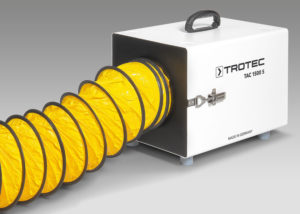
Both US-based companies and those headquartered in other countries produce the same primary financial statements—Income Statement, Balance Sheet, and Statement of Cash Flows. Concepts Statements give the Financial Accounting Standards Board (FASB) a guide to creating accounting principles and consider the limitations of financial statement reporting. Financial statements drawn on the basis of this version of trial balance generally comply with major accounting frameworks, like GAAP and IFRS. Closing entries are completed after the adjusted trial balance is completed. We’ll explain more about what an adjusted trial balance is, and what the difference is between a trial balance and an adjusted trial balance.
Remember that the balance sheet represents the accounting equation, where assets equal liabilities plus stockholders’ equity. An adjusted trial balance is a listing of all company accounts that will appear on the financial statements after year-end adjusting journal entries have been made. The adjusted trial balance is what you get when you take all of the adjusting entries from the previous step and apply them to the unadjusted trial balance. It should look exactly like your unadjusted trial balance, save for any deferrals, accruals, missing transactions or tax adjustments you made.
Step 1: Run an unadjusted trial balance
After incorporating the $900 credit adjustment, the balance will now be $600 (debit). Utilities Expense and Utilities Payable did not have any balance in the unadjusted trial balance. After posting the above entries, they will now appear in the adjusted trial balance. In these columns we record all asset, liability, and equity accounts.
AccountingTools
According to the rules of double-entry accounting, a company’s total debit balance must equal its total credit balance. Both the unadjusted trial balance and the adjusted trial balance play an important role in ensuring that all of your accounts are in balance and financial statements will reflect the most accurate totals. The above trial balance vertical analysis of income statement is a current summary of all of your general ledger accounts before any adjusting entries are made. When you prepare a balance sheet, you must first have the most updated retained earnings balance. To get that balance, you take the beginning retained earnings balance + net income – dividends.
As you have learned, the adjusted trial balance is an important step in the accounting process. But outside of the accounting department, why is the adjusted trial balance important to the rest of the organization? An employee or customer may not immediately see the impact of the adjusted trial balance on his or her involvement with the company. An adjusted trial balance is prepared using the same format as that of an unadjusted trial balance. If the sum of the debit entries in a trial balance (in this case, $36,660) doesn’t equal the sum of the credits (also $36,660), that means there’s been an error in either the recording of the journal entries.
The statement of retained earnings is prepared second to determine the ending retained earnings balance for the period. The statement of retained earnings is prepared before the balance sheet because the ending retained earnings amount is a required element of the balance sheet. The following is the Statement of Retained Earnings for Printing Plus. Each month, you prepare a trial balance showing your company’s position. After preparing your trial balance this month, you discover that it does not balance. Once you have a completed, adjusted trial balance in front of you, creating the three major financial statements—the balance sheet, the cash flow statement and the income statement—is fairly straightforward.
OpenStax
Before posting any closing entries, you want to make sure that your trial balance reflects the most accurate information possible. The balance of Accounts Receivable is increased to $3,700, i.e. $3,400 unadjusted balance plus $300 adjustment. Service Revenue will now be $9,850 from the unadjusted balance of $9,550. What do you do if you have tried both methods and neither has worked?
- The accounts of a Balance Sheet using IFRS might appear as shown here.
- My Accounting Course is a world-class educational resource developed by experts to simplify accounting, finance, & investment analysis topics, so students and professionals can learn and propel their careers.
- Applying all of these adjusting entries turns your unadjusted trial balance into an adjusted trial balance.
- An adjusted trial balance is created after all adjusting entries have been posted into the appropriate general ledger account.
- After a company posts its day-to-day journal entries, it can begin transferring that information to the trial balance columns of the 10-column worksheet.
It is mostly helpful in situations where financial statements are manually prepared. If the organization is using some kind of accounting software, the bookkeeper or accountant just needs to pass the journal entries (including adjusting entries). The software automatically adjusts and updates the relevant ledger accounts and generates financial statements for the use of various stakeholders.
Overview: What is an adjusted trial balance in accounting?
Once all ledger accounts and their balances are recorded, the debit and credit columns on the adjusted trial balance are totaled to see if the figures in each column match. For example, inventory debit or credit Interest Receivable is an adjusted account that has a final balance of $140 on the debit side. This balance is transferred to the Interest Receivable account in the debit column on the adjusted trial balance. Accumulated Depreciation–Equipment ($75), Salaries Payable ($1,500), Unearned Revenue ($3,400), Service Revenue ($10,100), and Interest Revenue ($140) all have credit final balances in their T-accounts.
Once you’ve double checked that you’ve recorded your debit and credit entries transactions properly and confirmed the account totals are correct, it’s time to make adjusting entries. This means that for this accounting period, there was a total inflow (debit) of $11,670 into the cash account. Pepper’s Inc. totalled up all of the debits and credits from their general ledger account involving cash, and they added up to a $11,670 debit. An unadjusted trial balance is what you get when you calculate account balances for each individual account in your books over a particular period of time. An adjusted trial balance is prepared after adjusting entries are made and posted to the ledger.

The accounting equation is balanced, as shown on the balance sheet, because total assets equal $29,965 as do the total liabilities and stockholders’ equity. To exemplify the procedure of preparing an adjusted trial balance, we shall take an unadjusted trial balance and convert the same into an adjusted trial balance by incorporating some adjusting entries into it. To simplify the procedure, we shall use the second method in our example. At this point you might be wondering what the big deal is with trial balances. Did we really go through all that trouble just to make sure that all of the debits and credits in your books balance? Just like in an unadjusted trial balance, the total debits and credits in an adjusted trial balance must equal.

As with the unadjusted trial balance, transferring information from T-accounts to the adjusted trial balance requires consideration of the final balance in each account. If the final balance in the ledger account (T-account) is a debit balance, you will record the total in the left column of the trial balance. If the final balance in the ledger account (T-account) is a credit balance, you will record the total in the right column. Adjusted trial balance is not a part of financial statements; rather, it is a statement or source document for internal use.
The preparation of the statement of cash flows, however, requires a lot of additional information. An adjusted trial balance is a listing of the ending balances in all accounts after adjusting entries have been prepared. The statement of retained earnings always leads with beginning retained earnings. Beginning retained earnings carry over from the previous period’s ending retained earnings balance. Since this is the first month of business for Printing Plus, there is no beginning retained earnings balance. Notice the net income of $4,665 from the income statement is carried over to the statement of retained earnings.
Once all accounts have balances in the adjusted trial balance columns, add the debits and credits to make sure they are equal. If you check the adjusted trial balance for Printing Plus, you will see the same equal balance is present. Once all of the adjusting entries have been posted to the general ledger, we are ready to start working on preparing the adjusted trial balance. Preparing an adjusted trial balance is the sixth step in the accounting cycle.
The salon had previously used cash basis accounting to prepare its financial records but now considers switching to an accrual basis method. You have been tasked with determining if this transition is appropriate. Applying all of these adjusting entries turns your unadjusted trial balance into an adjusted trial balance. While you can create an adjusting trial balance manually, or by using spreadsheet software, it’s far easier to do so when using accounting software. Here are some of The Ascent’s top picks for creating an adjusted trial balance.










